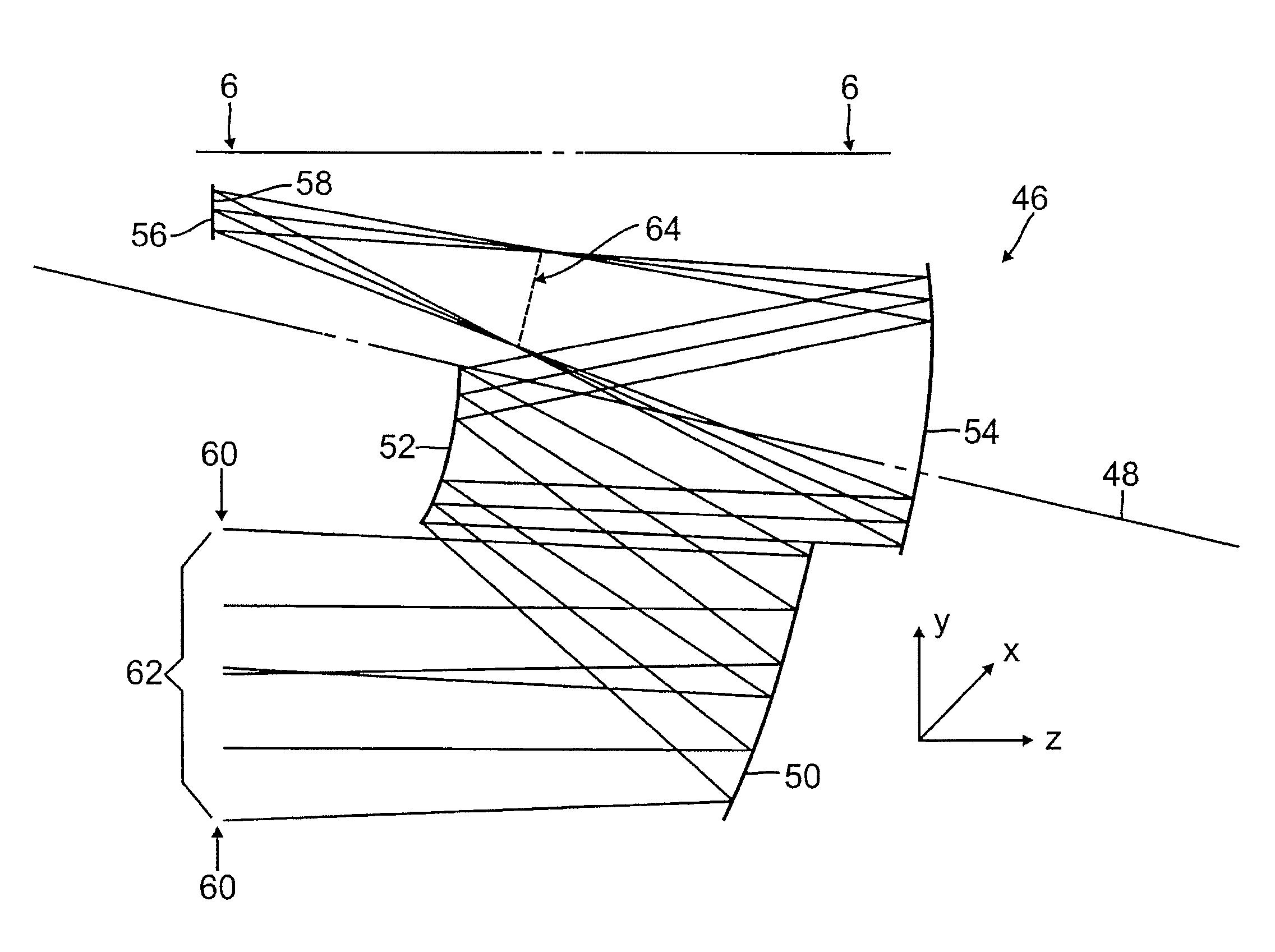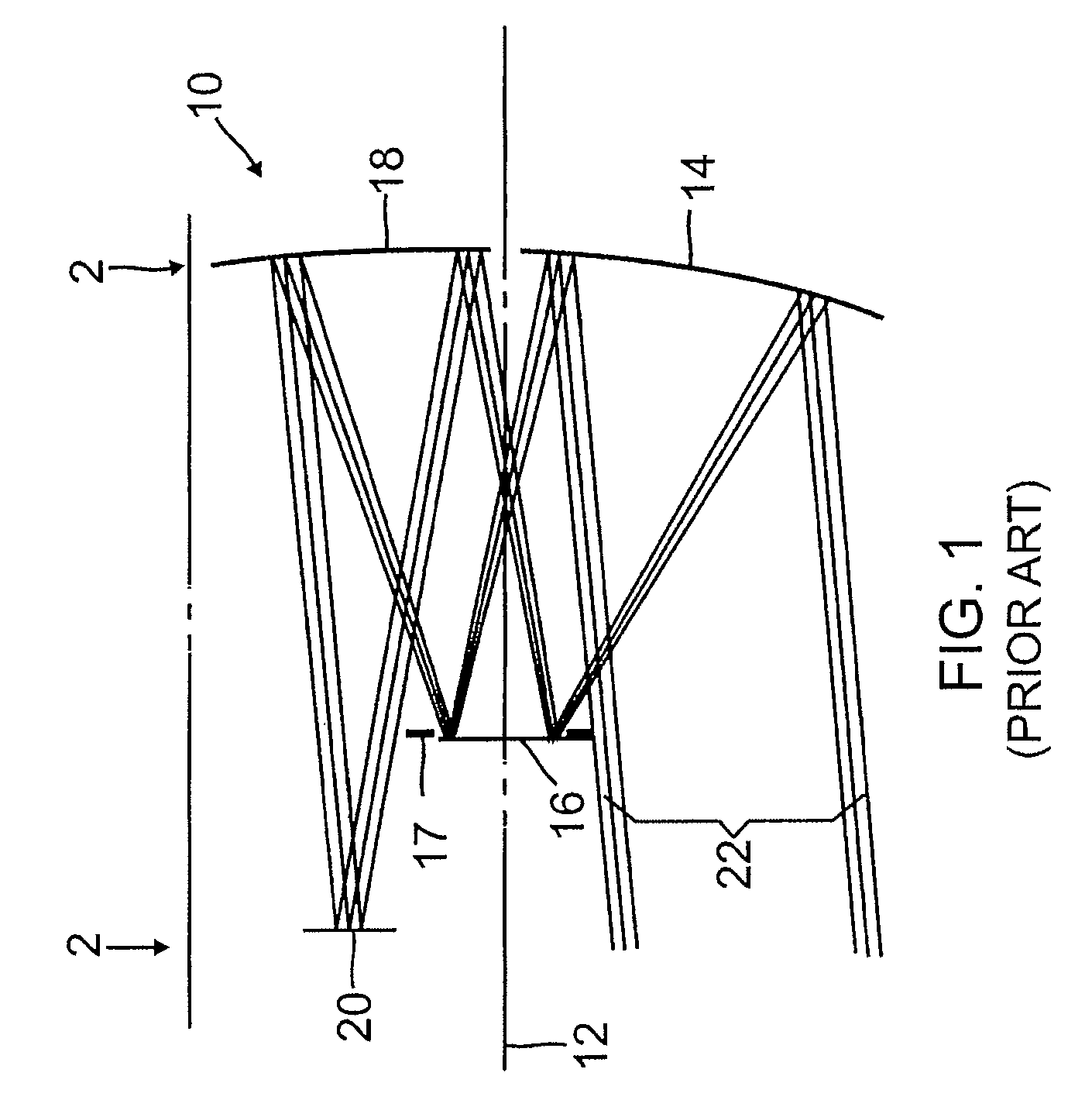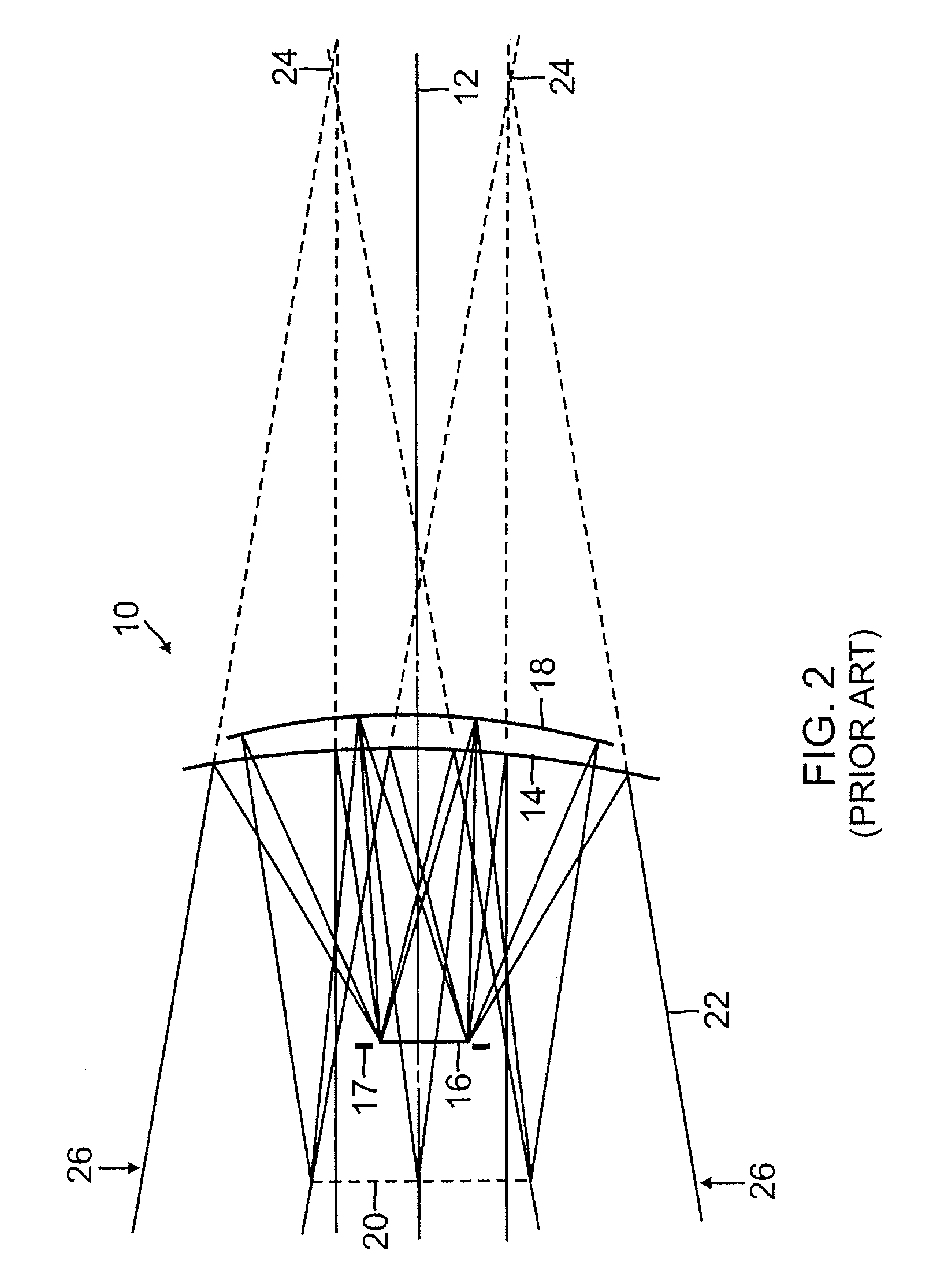Reflective triplet optical form with external rear aperture stop for cold shielding
a triplet optical and cold shielding technology, applied in the direction of mirrors, instruments, mountings, etc., can solve the problems of reduced image quality, increased cost, and inability to meet the requirements of applications,
- Summary
- Abstract
- Description
- Claims
- Application Information
AI Technical Summary
Benefits of technology
Problems solved by technology
Method used
Image
Examples
Embodiment Construction
[0025]The present invention will now be described more fully with reference to the accompanying drawings, in which exemplary embodiments thereof are shown. The invention may, however, be embodied in many different forms and should not be construed as being limited to the embodiments set forth herein; rather, these embodiments are provided so that this disclosure will be thorough and complete, and will fully convey the concept of the invention to those skilled in the art.
[0026]Accordingly, there is presented a reflective triplet optical form with a rear aperture stop for cold shielding in accordance with embodiments of the present invention. The system may be utilized for providing images of distant objects. Using all-reflecting optical elements, the system is configured such that the aperture stop of the optical system is between the last optical element and the image plane. With the aperture stop in this position, the image plane may be cold shielded more effectively than prior art...
PUM
 Login to View More
Login to View More Abstract
Description
Claims
Application Information
 Login to View More
Login to View More - R&D
- Intellectual Property
- Life Sciences
- Materials
- Tech Scout
- Unparalleled Data Quality
- Higher Quality Content
- 60% Fewer Hallucinations
Browse by: Latest US Patents, China's latest patents, Technical Efficacy Thesaurus, Application Domain, Technology Topic, Popular Technical Reports.
© 2025 PatSnap. All rights reserved.Legal|Privacy policy|Modern Slavery Act Transparency Statement|Sitemap|About US| Contact US: help@patsnap.com



